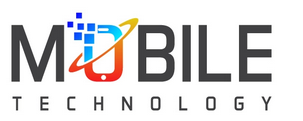In recent years, many financial institutions have rushed to adopt cloud-based technologies, but many report difficulties in unlocking the full value of these investments. The asset leasing and finance industry faces unique challenges due to stringent regulatory and security requirements. Early attempts to fully migrate to the cloud often resulted in skyrocketing costs without delivering the expected benefits.
However, the landscape is rapidly changing. Asset finance companies of all sizes are now leveraging cloud-based asset leasing software to meet customer demands, fend off competitors, boost efficiency, and accelerate business growth. The COVID-19 pandemic significantly accelerated digital transformation across industries, demonstrating the critical role of cloud-based solutions in ensuring business continuity and flexibility.
Strategic Cloud Spending: A Modular Approach
A decade into this transformation, asset finance leaders are adopting a more strategic approach to cloud spending. This modular strategy prioritizes projects with clear objectives that advance the core goals of their assets. While the details may seem complex, the concept is straightforward: choose one area to prove the concept, monetize it through a digital business model, and apply the lessons learned to subsequent projects.
- Prioritizing Key Projects: The first step in this approach is to identify and prioritize projects that align with the company’s strategic goals. This could involve enhancing the customer experience, improving operational efficiency, or launching new digital services. By focusing on specific, high-impact areas, companies can ensure that their cloud investments deliver tangible benefits.
- Proof of Concept: Once a project is selected, the next step is to develop a proof of concept (PoC). This involves using cloud-based asset leasing software to create a small-scale version of the project. The PoC allows companies to test the feasibility of their ideas in a controlled environment, identify potential challenges, and make necessary adjustments before full-scale implementation.
- Monetization through Digital Business Models: After validating the PoC, the focus shifts to monetization. This involves integrating the new solution into the company’s existing digital business model or creating new revenue streams. For example, a cloud-based asset finance solution might enable the launch of subscription-based services, usage-based pricing, or other innovative financial products that meet evolving customer needs.
- Learning and Scaling: The final step in the modular approach is to analyze the outcomes of the initial project, glean insights, and apply these lessons to subsequent projects. This iterative process helps refine the strategy, improve future implementations, and progressively scale the cloud transformation across the organization. By adopting a learning-centric approach, asset finance companies can continually enhance their capabilities and achieve sustained growth.
Benefits of a modular strategy
Enhanced Flexibility: One of the main advantages of a modular approach to cloud spending is enhanced flexibility. By focusing on discrete projects, companies can quickly adapt to changes in the market or regulatory environment. This flexibility is crucial in the asset finance industry, where regulations and market conditions can change rapidly.
Risk Mitigation: A modular strategy also helps mitigate risks associated with large-scale cloud migrations. Instead of attempting a wholesale transition, which can be costly and complex, companies can incrementally move their operations to the cloud. This reduces the risk of disruptions and allows for better management of resources and timelines.
Improved Resource Allocation: By prioritizing projects with clear objectives, companies can allocate resources more effectively. This targeted approach ensures that investments are directed towards initiatives with the highest potential for return, rather than spreading resources too thinly across multiple, less impactful projects.
Accelerated Innovation: The modular approach fosters a culture of continuous innovation. By regularly launching and scaling new projects, companies can stay ahead of the competition and quickly respond to emerging trends and technologies. This agility is essential for maintaining a competitive edge in the fast-paced asset finance industry.
Scalable Growth with Cloud-Based Asset LeasingSoftware
It’s becoming increasingly clear to asset finance companies that the key to sustainable growth lies in adopting agile, modern cloud-based assetfinance solutions. This technology enables faster time to market and the ability to deliver real-time, customized, and frictionless asset financing services. Given the impracticality of swiftly migrating legacy systems to the cloud, executives are methodically working towards their goals through strategic cloud investments.
The benefits of this novel approach are substantial. Even a six to twelve-month lead over competitors can yield significant gains in client acquisition and improved results. The pandemic has reshaped executives’ visions of cloud transformation, highlighting the importance of digital and mobile apps in creating personalized and engaging client experiences. This shift allows companies to grow in ways that traditional asset financing methods could not.
Embracing Innovation
Modern asset finance companies are seeing tangible results from adopting innovative technologies. For instance, bot-enabled chat sessions have surged by 300% year-over-year for some firms, and over two-thirds of loans are now sold online or via mobile devices, displacing traditional branch and telephone sales. As more customers opt for digital methods to finance their assets, this trend is poised to continue.
The Imperative to Let Go of Legacy Systems
The mantra for the asset financing industry in the coming years could well be “adapt or perish.” Cloud technology enables businesses to operate more efficiently and cost-effectively, from customer service to productivity enhancements and IT simplification. In a market where competitors are built for efficiency and growth, companies without these capabilities will struggle to survive.
However, merely adopting cloud technology isn’t enough. Asset finance leaders must break down silos that hinder cross-functional collaboration and innovation. Technology spending needs to be repositioned on the balance sheet, recognizing the cloud as an operational expense rather than a capital expense. This perspective helps transform asset finance companies into tech-powered financial services organizations.
Measuring Cloud ROI in Asset Finance
For data-driven asset finance companies, embracing the cloud presents unique challenges, particularly in measuring the diverse benefits that extend beyond revenue generation and business continuity.
To maximize cloud ROI, companies should focus on:
- Meeting customer needs and setting clear goals
- Digitalizing business models and upgrading to cloud-based asset finance solutions
- Reimagining the roles of managers and frontline workers
- Identifying the best workers for each project based on their skills
Measuring the soft ROI of cloud computing—such as improved strategic decisions, enhanced brand reputation, and increased customer trust—can be challenging. Nevertheless, these intangible benefits are crucial for the overall success of cloud transformation initiatives.
Reducing Costs and Increasing Efficiency
While growth is a primary focus of cloud transformations, asset finance companies also aim to reduce expenses. Strategic cloud spending helps dismantle internal silos, speed up decision-making, and require human oversight of AI and ML outputs to minimize inefficiencies and prepare for future challenges.
Embracing Cloud-Native Architecture
In the early days of cloud adoption, many asset finance companies made the mistake of treating it as just another piece of technology. Today, however, there is a growing recognition of the transformative potential of cloud-native architecture. By integrating this technology into their operations, companies can build a competitive advantage with their highest-value projects.
Capitalizing on Cloud Opportunities
There is a growing trend of asset finance companies using strategic cloud spending coupled with digital asset management software to unlock new opportunities. By fully embracing cloud technology, these companies are not only discovering the myriad possibilities it offers but also learning how to leverage these opportunities to gain a competitive edge.
The flexibility of cloud technology allows asset finance companies to amplify their unique value propositions and communicate them more effectively to new customers. This capability is crucial for mitigating the revenue impact of emerging competition.
Conclusion
The shift to cloud-based asset leasing and finance solutions is not just a technological upgrade but a strategic imperative for modern financial institutions. By adopting a modular approach to cloud spending, embracing innovation, letting go of legacy systems, and measuring the full spectrum of cloud ROI, asset finance companies can unlock unprecedented growth and efficiency. As the industry continues to evolve, those who harness the power of the cloud will be well-positioned to lead the way.

